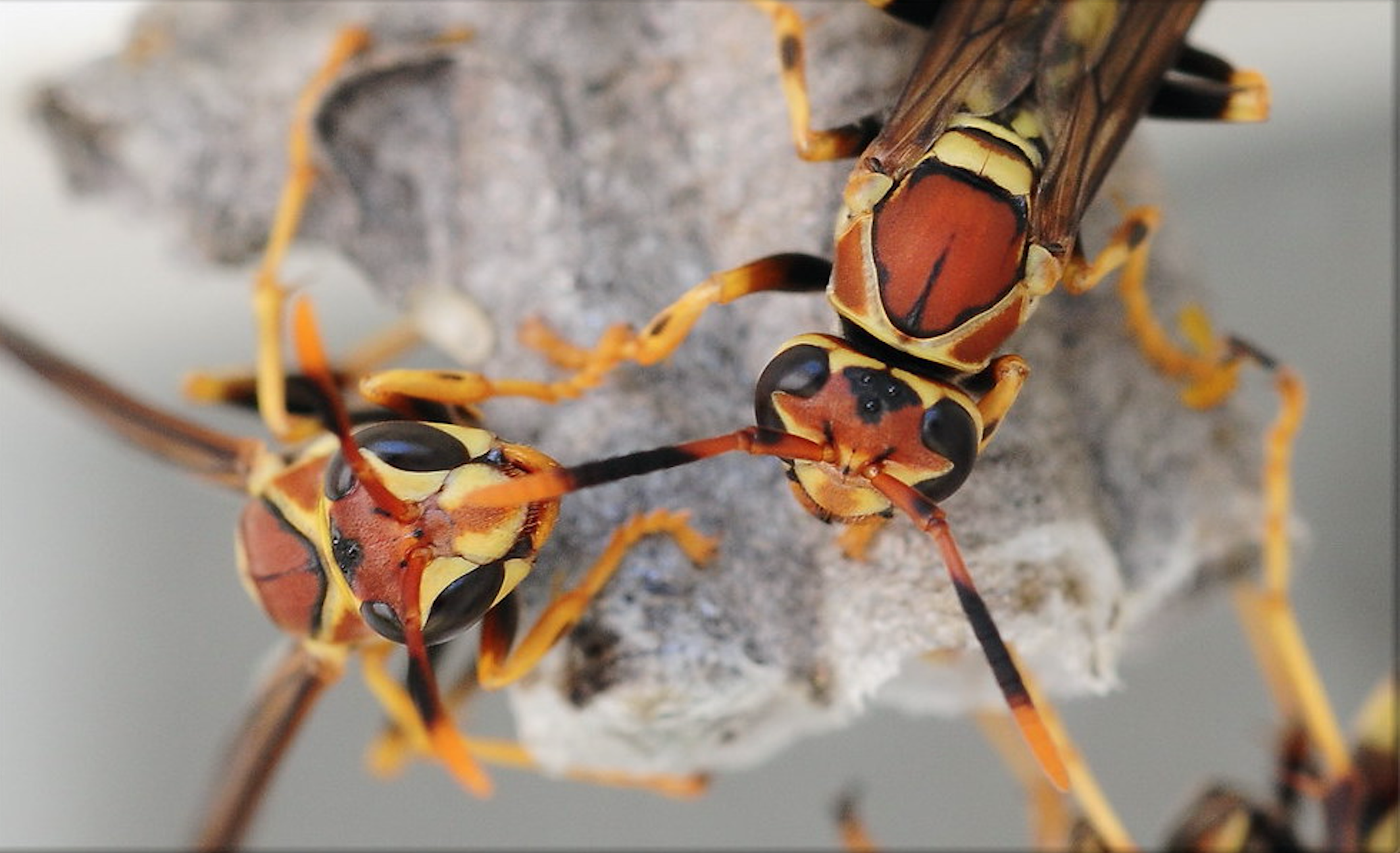Wasps Are Capable of Basic Logical Reasoning, Study Finds

Credit to Author: Becky Ferreira| Date: Wed, 08 May 2019 13:20:43 +0000
Wasps are the first insects known to demonstrate “transitive inference,” a sophisticated form of logical reasoning, according to a study published on Tuesday in Biology Letters.
Transitive inference is the ability to surmise a relation between objects without a direct comparison. Humans develop this capability in childhood, often through thought experiments such as this one: Jane is taller than Sally, and Sally is taller than Ben, so Jane must be taller than Ben. Even though Jane and Ben never directly compared their heights, there is enough information to infer how tall they are relative to each other.
Scientists led by Elizabeth Tibbetts, an evolutionary biologist at the University of Michigan, wanted to find out if paper wasps could make similarly complex deductions. To do this, the team trained wild members of two paper wasp species— Polistes dominula and Polistes metricus—to distinguish between five colors labeled A, B, C, D, and E.
Each wasp was placed in the center of a rectangular arena that displayed a different color on each end. One side of the arena was electrified at 0.4 Volts, while the other was a dedicated “safety zone” that did not shock the wasps.
“It is a very mild shock,” Tibbetts told Motherboard in an email. “We want the wasps to learn, so we keep the shock low enough that it doesn’t hurt them or distract them. The shock is slightly unpleasant.”
In the tests with the color pairing A/B, the A side was safe and the B side was electrified. In tests that involved the pair B/C, the B side was safe and the C side was electrified, and so on. As a result, the A color was always safe, the E color was always electrified, and the B, C, and D colors were safe in half the trials and electrified in the other half.
The question was whether the wasps would figure out the underlying hierarchy of colors—A was the safest, E was the most unsafe, and B, C, and D fell between them in that exact order. To double-check that the wasps got the message, one group learned the sets starting with the A/B pair first, while the other group learned them backwards starting with the D/E pair.
Once they were trained to recognize the pairs, the wasps were tested on combinations that they had not seen before: A/E and B/D, for example. These trials with novel pair combinations did not have an electrified side, but even without the threat of a shock, the insects were much more likely to select the A and B ends of the arena.
The wasps’ preference for A over E makes sense, considering that A was the only color that was always safe and E was the only color that was always electrified. But the fact that they also preferred B to D suggests that the wasps figured out that the broader hierarchy of the colors was ordered A, B, C, D, E.
This is the first evidence of transitive inference in invertebrates, to the authors’ knowledge. A similar experiment was conducted with honeybees in 2004, but it found that the bees could not remember the hierarchy of the color pairs. Though honeybees can understand advanced concepts like addition, subtraction, and even the number zero, they have so far appeared incapable of performing transitive inference skills.
Read More: PSA: Drunk, Belligerent Wasps Are Terrorizing Beer Gardens
Wasps and bees each have brains containing about one million neurons (for comparison, humans have about 86 billion). This means that the difference in their cognitive abilities must have an explanation that transcends mere brain size.
Tibbetts and her colleagues suggest that the social complexity of paper wasps might be the reason for the contrast between tests with the two insects. While honeybees have one queen and equally-ranked female workers, paper wasps have hierarchical ranks of female “foundresses” that must compete for food, reproductive opportunities, and status. The ability to use transitive inference could help these wasps draw abstract conclusions about rival foundresses—basically, sizing up the competition.
“Wasps could figure out whether or not they are likely to beat a rival without actually fighting with the rival,” Tibbetts said. “For example, if a wasp saw Jane win a fight with Lisa and that wasp had previously won a fight with Jane, the wasp could infer that she could probably beat Lisa.”
“We know other animals use transitive inference in this way during social interactions, but we haven’t tested wasps in a social context yet,” she added.
According to the authors, the study “contributes to a growing body of evidence that the miniature nervous system of insects does not limit sophisticated behaviours.”
In other words, don’t judge bees and wasps by their brain sizes alone, because they can do a lot with one million neurons.
Get six of our favorite Motherboard stories every day by signing up for our newsletter .
This article originally appeared on VICE US.